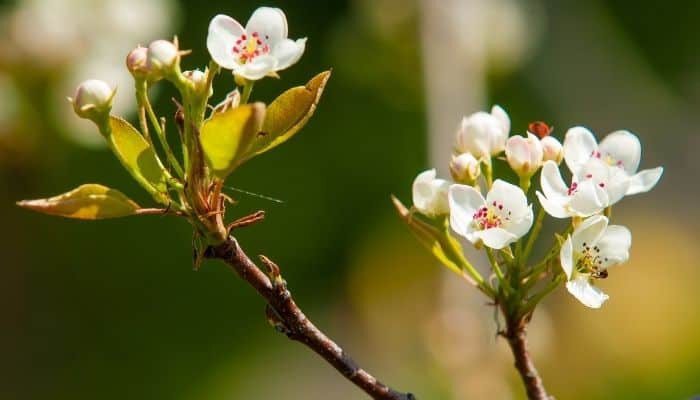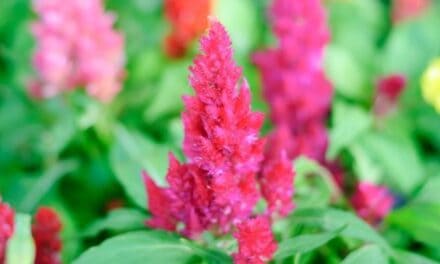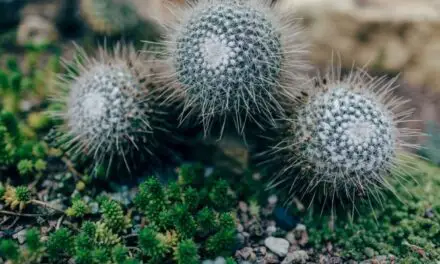Lilac bushes often flower nicely in the summer, produce healthy growth for a while and then, for some reason, begin to turn brown and look miserable by September.
It isn’t always clear why this happens and it’s a scenario that many lilac growers face.
Let’s dig a little deeper and try to find out why this happens and what you can do about it.
Table of Contents
Why Is My Lilac Bush Turning Brown?

When your lilac bush begins to turn brown it’s most commonly because of one or more of the following reasons: not watering correctly, sunburn, bacterial blight or it might just be older branches of your lilac naturally dying back and turning brown.
But, it could also be turning brown because of a pest infestation, poor soil, lack of sun, or improper fertilization.
There can be a number of issues that can cause your lilac bush to turn brown.
Have a look at this quick checklist first to see if you can spot the problem.
Quick Checklist:
Is your plant mature?
Did you look at leaf undersides and find any insects or diseases?
Was summer unusually hot and dry?
Was spring very cold and wet?
Have you tested the soil’s pH balance and was it below 5.5?
Does your lilac bush sit in direct sunlight?
Are there any local critters that could bother your plant?
A yes to one or more of these questions may be the cause of your Lilac bush turning brown.
But let’s look a little closer at some of the most common of these and see if your plant can be helped.
How To Stop Your Lilac Bush From Turning Brown
Prune Branches That Die Back
If your plant is mature, older branches will naturally die back.
Parts of your lilac bush may be turning brown because the older branches are dying back.
Some mature branches will die and may need to be pruned until all the dead matter has been removed.
If your lilac is very old then you may need to prune branches all the way down to the level of the soil.
This will get rid of the browning, encourage new growth and rejuvenate your plant over time.
Treat Bacterial Blight
Bacterial blight is another common cause of lilac bushes turning brown.
Improper fertilization, animal damage, or severe drought creates the conditions for bacterial blight; also known as Shoot or Blossom Blight.
This can affect many lilac varieties and some research suggests white lilacs are most vulnerable.
Bacterial blight produces brown spots on leaves and stems.
The spots can enlarge and deform leaves, causing them to curl.
As it progresses, the symptoms may travel to the stems, turning them black and causing them to wilt.
This is a sure sign the plant’s health is going downhill and it may be dying.
Treatment And Prevention
With clean, sterilized shears, remove infected leaves and prune the branches back about 10 to 12 inches below the visible infection.
Blight can be highly contagious and a real nightmare to get rid of.
Disinfect or throw away pots, gloves, equipment, or anything that has come into contact with this disease or it will continue to spread like crazy.
To help keep bacterial blight away you should use a combination of a copper fungicide and a mancozeb-containing fungicide.
Apply them 2 or 3 times at 1 to 2-week intervals as leaf growth becomes visible, but before the bacterial blight begins taking hold.
Do this when the weather is dry and burn or throw away clippings.
If the problem remains a concern, don’t apply any nitrogen fertilizer in the springtime.
Water Properly
Young lilacs (less than 12 months) are very thirsty before their roots have a chance to take hold and may begin to turn brown if underwatered, which predisposes them to infection.
One of the most important aspects of lilac care of their need for water.
They’ll need a little extra water during the hot summer months.
Check your plant regularly and give it water when you feel that the top inch of soil has become dry to the touch.
Once a young plant’s roots have been established and it’s not too hot, your lilac bush may only need watering 1 or 2 times each month.
Count to 10 while you’re watering just to be sure you are giving your lilac enough water for its roots to absorb.
Don’t water overhead and avoid wet leaves.
Fertilize The Right Way
Proper fertilization can also help to stop your lilacs from turning brown.
Use a phosphorous-rich fertilizer, once in spring and once in fall.
Dig a hole next to the plant’s roots and pour fertilizer there; one cup for younger/smaller plants and two cups for older or plants five feet tall or more.
If the blooms are healthy in spring, don’t fertilize until autumn.
Overfertilization can kill lilacs.
Space Them Out
If you have more than one bush, ensure they have enough space. This will differ depending on their expected height.
Space six to eight feet tall lilacs between two and four feet apart; if more than eight feet tall, space them four to six feet apart.
Prune At The Right Time
The best time to prune lilacs is a few weeks after their flowers have faded in the mid to late summer.
When you notice crowding, prune a few branches to increase airflow.
Increasing airflow will help to keep your lilacs healthy and stop them from turning brown.
Older lilacs need regular pruning nearer to the soil.
This will allow for healthier growth the following year.
Just be sure not to remove next year’s flowering buds.
Mind The Weather
Browning lilac bushes could also be the result of cold, wet spring weather followed by a dry, hot summer.
Depending on the extent of browning you may have to cut the entire plant back to six or eight inches tall.
Although it will take a few years to grow back, it will return bigger and better.
Remove any mulch to allow air into the roots at the start of spring.
During the summer, keep the base moist with about an inch per week.
Make Sure They Get The Right Amount Of Sun
Lilacs love about 6 to 8 hours of full, afternoon sun and don’t fare well in partial shade.
Any more than 8 hours of direct sun and you run the risk of your lilac scorching and turning brown.
Also, browning problems sometimes appear because seeds weren’t sewn under full sunlight.
Watch For Pests
If holes and browning are only on the bark, beetles might be your problem.
But you have to make sure this is the issue because it could also be mice or voles.
If voles are damaging your lilacs, there will be visible tunnels or soil will have sunken areas around the roots.
Plant Them In The Soil They Like
Lilacs must have well-draining soil that can retain a little moisture and stay moist.
Try to avoid overwatering and underwatering.
Test the top inch of soil with your finger and if it feels dry it’s safe to water.
Wilting, browning, and curling leaves almost always means it’s thirsty.
If the soil is very dry, water the roots in slow increments.
This allows for even absorption and prevents waterlogging.
Acidic soil isn’t ideal for lilacs.
Anything much outside of the range of a pH between 6.5 and 7.0 may cause the bush to struggle, evidenced by brown, curling leaves.
For acidity, add lime and for alkalinity, add pine needles, peat moss, sawdust, or sulfur.
Final Thoughts
Lilacs are a wonderful landscape plant with gorgeous colors and an amazing scent but when your lilac bush begins to turn brown and look unhappy, it can be a sad sight to see.
I’m sure if you look through all of the care suggestions in this guide, you’ll soon discover why your lilac bush is turning brown and be able to put a plan into action to nurse it back to good health.




